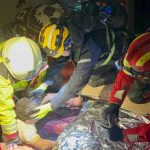By Denis Semakula, Country Director for Sudan at LM International
Education in emergencies (EiE) and conflict areas is the process of teaching and promoting quality education for children, youth, and adults in crisis-affected areas. Such emergency settings include conflicts, pandemics and different kinds of disasters caused by natural hazards.
Sudan has been grappling with protracted civilian displacement since 2003, when the Darfur crisis started, and almost 20 years later, millions of internally displaced persons (IDPs) are yet to find durable solutions. However, the Sudanese revolution of 2018, which led to the end of the 30 years rule of Mr Bashir on April 11 2019, brought jubilation and hope for a new civilian-led democratic Sudan amongst the population. In addition, it symbolised an end to the isolation from the international community, which for years had negatively impacted the country that was once considered the food basket of the Middle East.
Sudan embarked on a transition to democracy with the formation of the Sovereign Council, headed by General Abdel Fattah al-Burhan, a group of six civilians and four additional military officers. On October 2020, the Juba Peace Agreement (JPA) was signed by various conflicting parties laying the foundation towards democratic transition and much-needed economic reforms. The agreement was a key step towards ending a long period of turbulence in conflict-affected Darfur, South Kordofan and Blue Nile states.
Setbacks were experienced on October 25, 2021, when the Sudanese military, led by General Burhan, dissolved the Sovereign Council and took control of the government in a military coup. This created a leadership vacuum, worsening the humanitarian situation for the country that was yet to recover from the COVID-19 pandemic, and a prolonged dry spell affecting food security, further increased by the Russian aggression and invasion of Ukraine.
According to UNICEF, an estimated 535 million children – nearly one in four – live in countries affected by conflict or disaster. When a conflict or natural disaster erupts, education is generally the first service interrupted and the last resumed. Governments are often overwhelmed by the needs, and relief aid traditionally focuses on populations’ basic requirements – food, water, shelter, and protection – with only 2 to 4 per cent of humanitarian funding allocated to education1. Sudan is now faced with various protracted crises forcing millions of children out of school. Nearly 7 million children aged between 6 – 18 years or a third of school-age children – are not in school. The education of a further 12 million children is heavily interrupted by a lack of sufficient teachers, infrastructure, and an enabling learning environment allowing them to reach their full potential. Most children in classrooms have not only fallen behind in their learning, but 70 per cent of 10-year-olds at public schools cannot read a simple sentence.
Sudan has one of the youngest population demographics in the world, with 41 per cent of its total population under the age of 15 and 20 per cent between the ages of 15 and 24. If nothing is done to reverse the current challenges surrounding education with these alarming figures, we have a lost generation on our hands. It will be a catastrophe not only for Sudan as a country but for neighbouring countries, the whole region, and globally.
From 2020 and 2022, LM International Sudan country program implemented the Education in Emergencies project through a partnership with Save the Children International in South Kordofan. The project targeted 16 schools in 4 localities (10 in Dilling and Habila and 6 in Lagawa and Tulushi). Through this project, we increased access to education for 13 060 school-age children while also ensuring a protective environment for children, at home, in the community and in schools. From this project, we know from first-hand experience that;
EiE provides children with a safe place and plays an important role in ensuring that children receive the right support to overcome conflict-related trauma.
EiE is critical when it comes to ensuring the overall health and development of children. For example, in schools, children often receive food, which for many, is the only real meal of the day, and teachers may refer children who need medical attention or psychosocial support.
EiE empowers children with knowledge and skills that enhance their employability and survival skills. This, in turn, plays a vital role vis à vis helping to break the poverty cycle associated with conflict areas.
Education must never be seen as a luxury commodity for children; it is a human right, a must-have for the good of society. Without education, particularly in communities affected by the protracted crisis, youth are exposed to a myriad of risks, including recruitment into armed forces or groups, gender-based violence, sexual exploitation and abuse, abduction, and child labour, and girls face the additional risks of child marriage and pregnancy.
Quality education for the children of Sudan requires immediate emergency interventions such as temporary learning spaces to accommodate displaced persons due to the protracted crisis.





